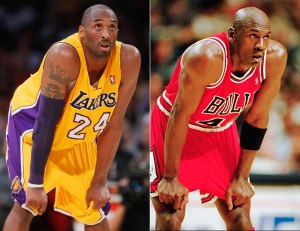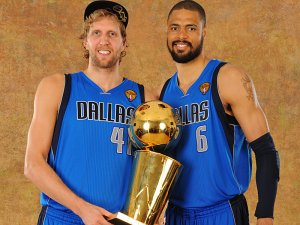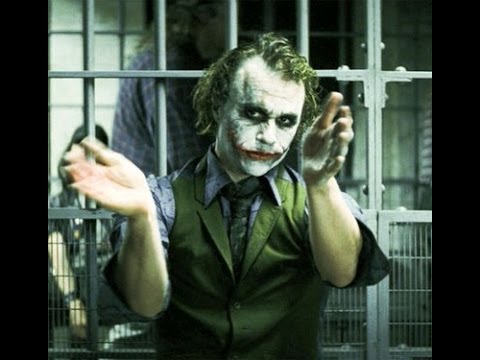
I know. You’ve already labeled me a “hater”. You already know what you think about what you think I think before you read how I arrived at thinking it. The heading gives me away, but it got you to click. Would you have paid me any mind if I had titled it “How Impressive is KD’s title…By the numbers?” Unless you’re a KD fan, Warriors fan, or a stats geek like me, probably none. But now you’re here, either up in arms, or looking for more proof for what you already believe.
After 10 years in the league, Kevin Durant finally has his first championship, along with Finals MVP Honors. The rangy superstar played with the same franchise for the first 9 years; but became frustrated with an inability to win a ring, despite 6 playoff appearances, 4 conference finals, and 1 NBA finals. Last summer, as an unrestricted free agent, he turned down a max offer from the Thunder and joined the already-loaded Golden State Warriors.
The previous season, the Warriors set the record for regular season wins (73), eclipsing Jordan’s ’96 Bulls, so it should be no surprise that they made playoffs history after adding Durant. You add a top-3-in-the-world player to one of the greatest teams ever and…yeah, championship or bust. Some have argued that this 2017 Warriors squad is THE best team to have played in the NBA, and after matching the greatest playoffs record in history, it’s hard to argue against. Not since 23 himself laced ‘em up have we had an “all-time” discussion as bonafide as this one.
In Curry and Durant, you have the league MVPs of the last three years. That’s two elite players in their prime on the same squad. It’s only happened once before, when Dr. J and Moses Malone joined forces in Philadelphia for each of their only championships (also only lost one playoff game). They had both made it to the finals once in the previous 2 years and come up empty-handed. On the other hand, this was Curry’s 3rd straight Finals appearance; and he, Klay, and Draymond already had an O’Brien without Durant’s help. It begs the question: how impressive is KD’s title, really? What load did he bear that wouldn’t already have been carried by his teammates?
Michael Jordan marks the change of an era in the NBA, so I’m looking at the list of champions since his reign. To compare how Durant’s accomplishment stacks up, I’ve taken the highest scorer from each team’s playoff run and compared their average to that of the next two scoring options. Basically, “Batman” v. “Robin and Alfred”. The greater the difference between the averages, the greater the load the star carried for their team. I realize this doesn’t account for important stats like rebounds, assists, and steals. But most of us would agree that what makes a player great is their ability to score consistently in high-pressure situations. “Being clutch”, “having heart”, “willing his team to victory.” However you want to say it, it’s about buckets when they count most. The players listed here are also those typically identified by fans as the team’s star, so it passes the eyeball test. Here are the most impressive finals performances since His Airness, by the numbers:
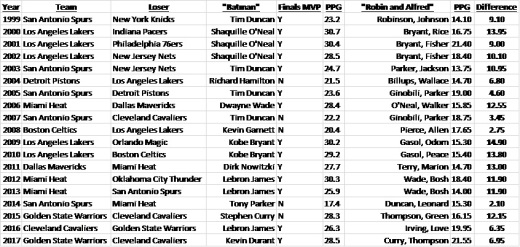
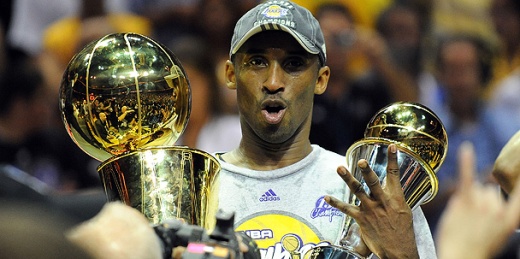
- Kobe Bryant- 2009 Los Angeles Lakers
Perhaps the closest thing we’ve seen to Jordan since, that was Kobe’s first trip to the finals after his ugly breakup with Shaq in LA. The big guy had already won a ring apart from Bryant (more on that later), so Kobe felt he had something to prove. He averaged 30.2 points while the two next best contributors, Pau Gasol and Lamar Odom, averaged 15.3. Kobe almost doubled their output on his way to sweep the Magic and earn his first Finals MVP.
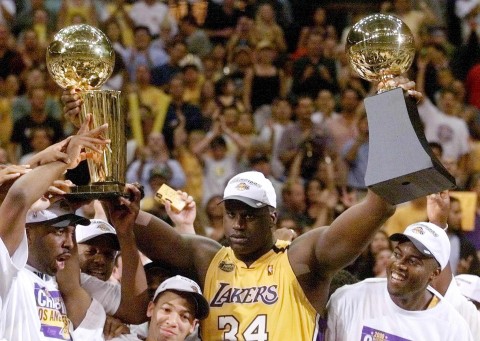
- Shaquille O’Neal- 2000 Los Angeles Lakers
This year was the beginning of a lot of things. It was Shaq’s first ring, first (and only) league MVP award, and first Finals MVP. O’Neal steamrolled opponents in that run, averaging 30.7 pts (highest on our list). His wingmen were Bryant and Glen Rice, who contributed 16.75 per game. More to come from these Lakers.

- Kobe Bryant- 2010 Los Angeles Lakers
Kobe and Shaq were a special duo. Who knows what could have happened if they had worked things out and stayed together. What we do know is Bryant makes another top 3 finish here, with 29.2 pts to Gasol and Metta World Peace’s 15.4. This earned Bryant his second finals MVP and fifth and final ring. Say what you want about Kobe, he was clutch.
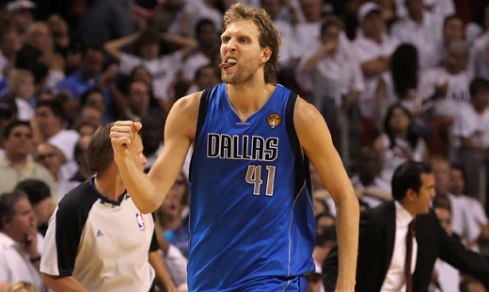
- Dirk Nowitzki- 2011 Dallas Mavericks
If fills me with joy to list Dirk above everyone not named Kobe or Shaq here. In my heart, his performance was the most impressive, but I’m admittedly a Mavs homer. The big German averaged 27.7 pts against the first incarnation of the James/Wade/Bosh superteam in South Beach. Jason Terry and Shawn Marion poured in 14.7 of their own, but it was Dirk’s leadership and grit that earned Dallas its only title in franchise history. To form, he was also awarded finals MVP.

- Dwayne Wade- 2006 Miami Heat
It slightly kills my buzz to list Wade next on this list. Buoyed by Shaq and Antoine Walker’s 15.85 pts, he averaged 28.4 pts to lead the Heat back from 0-2 against my Mavs and win four straight for his first title. You guessed it, also a finals MVP.
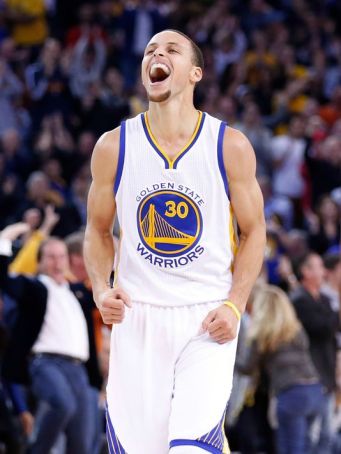
- Stephen Curry- 2015 Golden State Warriors
The unquestioned leader of this Warriors team, Curry averaged 28.3 in his first finals appearance against LeBron James. That statement works no matter how you read it, because Curry has only played in the finals against James. Fellow Splash-Brother Klay Thompson and spark plug Draymond Green added 16.15 of their own. This is the first time on our list Batman doesn’t get all the credit, with Andre Igoudala receiving the finals MVP for his defensive effort on James.
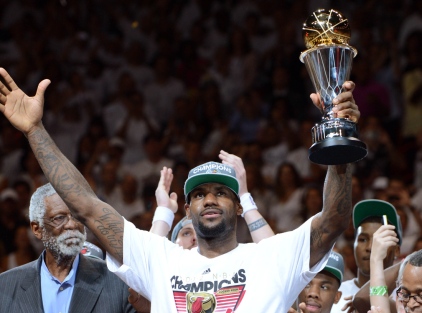
- LeBron James- 2012 Miami Heat
There are people who doubt LeBron’s place as the greatest player in the world today, and showing up 7th on this list despite 3 rings may have something to do with it. After deferring to Dwayne Wade in the ’11 finals against Dallas, LBJ took the reins and led Miami to a title with 30.3 per game. Wade and Chris Bosh still played a big role, with 18.4 pts. It was James’ first, and he also won finals MVP.

- LeBron James- 2013 Miami Heat
The Heat were looking for a repeat, and they got it behind James’ 25.9. Wade and Bosh did their thing once again with 14 pts, and handed the Spurs their only finals series loss in the Duncan era. James, on the other hand, was handed another finals MVP.
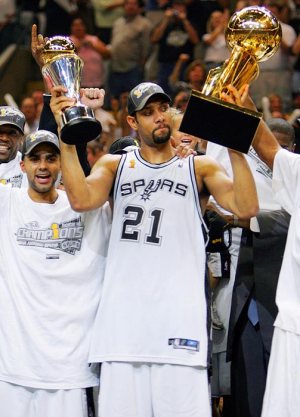
- Tim Duncan- 2003 San Antonio Spurs
When speaking of the greatest big men of all time, you shouldn’t get far before naming Tim Duncan. However, most people tend to overlook him, and it may be because he never really gave us spectacular playoffs performances. The Big Fundamental won his first title without David Robinson with 24.7 a game. His supporting cast constituted of Tony Parker and Stephen Jackson, who brought 13.75 to the table. Blowing opponents out has never been the Spurs’ style. Duncan did win finals MVP for doing something fundamental, I’m sure.
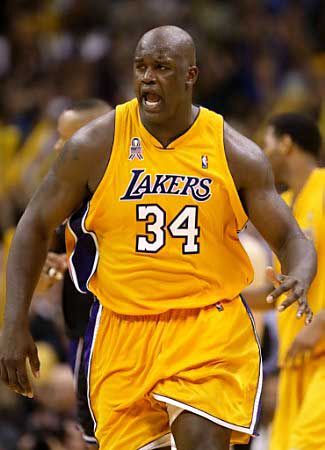
- Shaquille O’Neal- 2002 Los Angeles Lakers
This was the last ring Shaq and Kobe won together, with O’Neal averaging 28.5 and Bryant plus Derek Fisher at 18.4. It was also a threepeat, not only for the Lakers, but for Shaq and his finals MVP collection. That had to get on Bryant’s nerves.
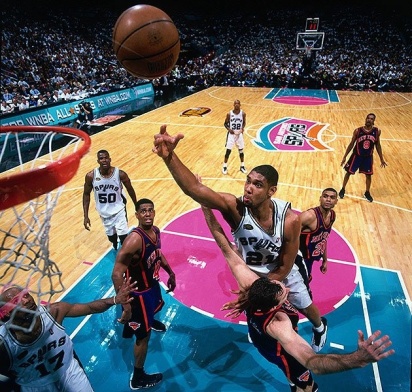
- Tim Duncan- 1999 San Antonio Spurs
The year after Jordan retired (the second time), Duncan led the Spurs to a finals win over the Knicks (Patrick Ewing probably thought this was his year to get a ring, not so much.) He put up 23.2 while David Robinson and Avery Johnson chipped in 14.10. It was Tim’s first championship and finals MVP.
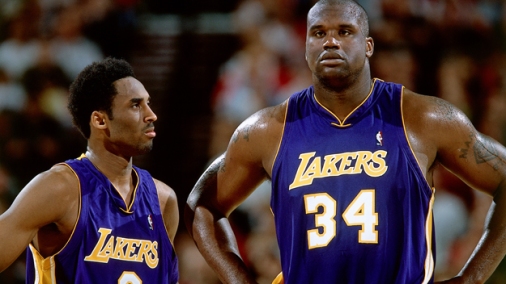
- Shaquille O’Neal- 2001 Los Angeles Lakers
More Big Diesel. More 30+ average (30.4). More help from Bryant and Fisher (21.4). More finals MVPs. Most dominant player since Jordan? Sure seems like it.
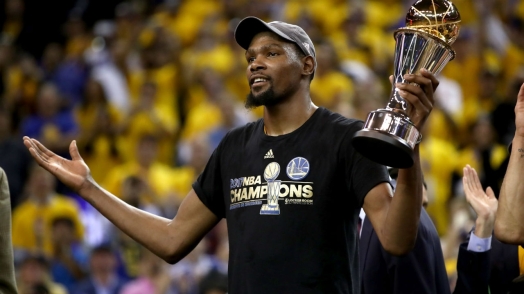
13. Kevin Durant- 2017 Golden State Warriors
Here he is. 13 of 19. Bottom of the middle tier. If you watched this finals, you know Durant played like a man on a mission. Virtually unguardable and unstoppable. He averaged 28.5 for the playoffs while Curry and Thompson dropped 22. If you dig a little deeper, you find that Durant and Curry were only separated by .4 pts, the slimmest margin of any top duo on this list. Basically, no one had a better Robin. And what about the often overlooked Alfred? By points, Thompson was top four. Only Tony Parker (twice) and Ray Allen scored more for their teams. Of course, Durant got finals MVP. I’m not saying he doesn’t deserve it. I’m saying it’s not that impressive, and I believe an honest assessment supports that.
For the fun of it, let’s look at the rest of the list…

14. Richard Hamilton- 2004 Detroit Pistons
If you’re taking the whole team into account, I say no accomplishment is more impressive than what this Pistons team did. Those O’Neal/Kobe SuperLakers? They beat those guys in 6. They were led by Rip’s 21.5, while Chauncey Billups and Rasheed Wallace gave 14.7 of their own. Every guy played a role, but Mr. Big Shot’s (Billups) leadership and clutchness earned him the finals MVP.
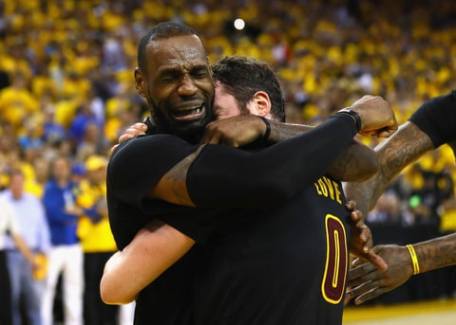
15. LeBron James- 2016 Cleveland Cavaliers
This was probably LBJ’s favorite championship. It would be mine if I were him. After leaving Cleveland for Miami, he returns home with the experience of 4 finals and 2 ‘ships to bring the Cavs back from a 1-3 hole and clinch the franchise’s first title. James dropped in 26.3 that run, while Kyrie Irving and Kevin Love added 19.95. Absolutely the finals MVP.

- Tim Duncan- 2005 San Antonio Spurs
In one of the most fundamentally sound (albeit boring) series of all time, the Spurs beat the Pistons in 7. Timmy led the way with 23.6 and Ginobili/Parker added 19. Duncan earned finals MVP.
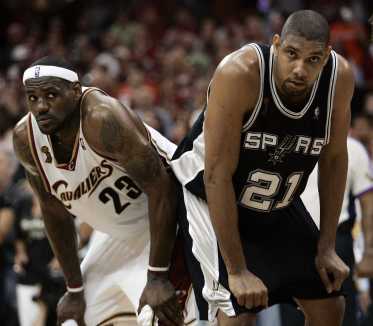
- Tim Duncan- 2007 San Antonio Spurs
He doesn’t care how ugly it is, as long as it gets done. Duncan put up 22.2 and Ginobili/Parker 18.75 in their sweep of James’ Cavs. Tony Parker would earn Finals MVP that year.

- Kevin Garnett- 2008 Boston Celtics
This is a great sports story. After getting no further than the conference finals with Minnesota in an already Hall-of-Fame career, he joined forces with Paul Pierce and Ray Allen in Boston to chase a ring. This is arguably the first collaborated superteam of the modern era, before the 2011 Heat, although this trio was considered by most “past their primes.” Every man pulled his weight, as KG scored 20.4 and Pierce/Allen added 17.65. Garnett was handed the finals MVP trophy by Bill Russell, legendary Celtics big man. A great moment.
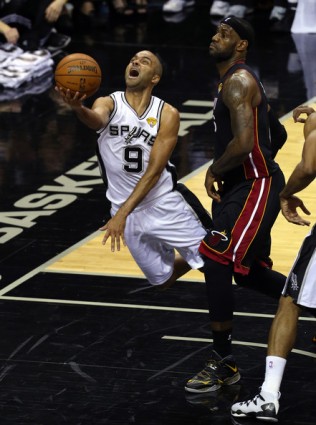
- Tony Parker- 2014 San Antonio Spurs
The only finals Duncan was involved in where he wasn’t the leading scorer for his squad, Parker led the way with an anemic 17.4. Duncan and Leonard followed up with 15.3, this was the team that essentially broke up the superfriends in Miami. Much like Iggy the following year, Leonard won finals MVP for his defense on LBJ.
The NBA is a superstar league. With only five players from a team active at one time, individual performances are valued more than in any other sport. That means the less the supporting cast does, the more is required of the star, of Batman. And while any title should be celebrated, not all Batmans perform equally. Not all leading men can be Keaton or Bale, some are Kilmer or Clooney. Don’t know if you saw those guys as the Dark Knight, but they weren’t very impressive.

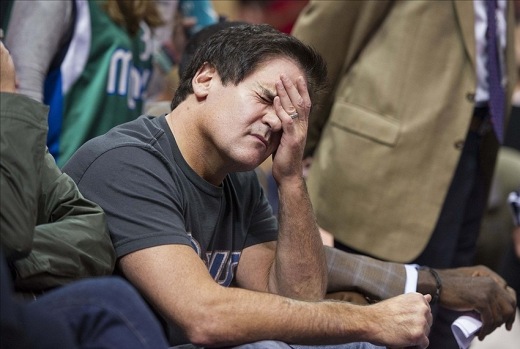
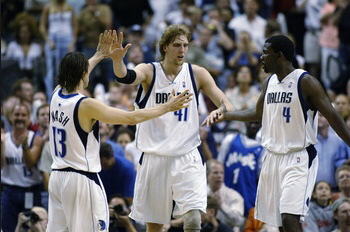

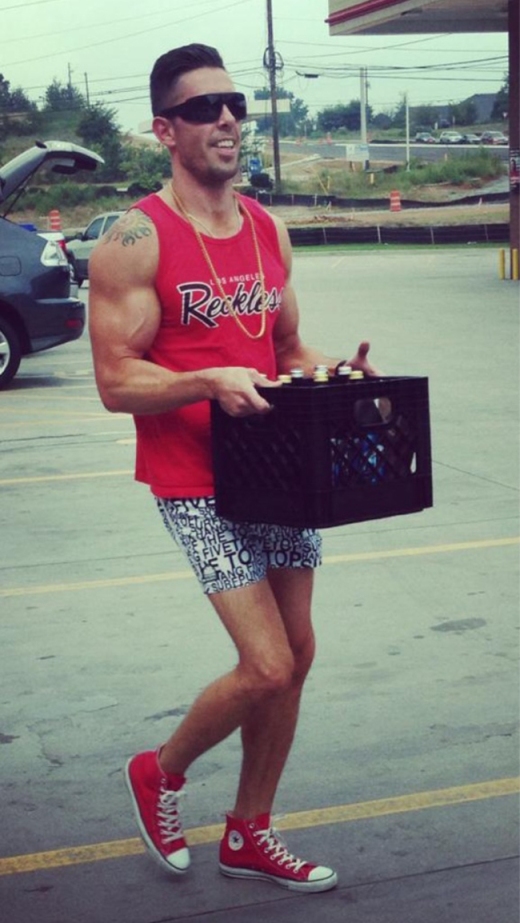
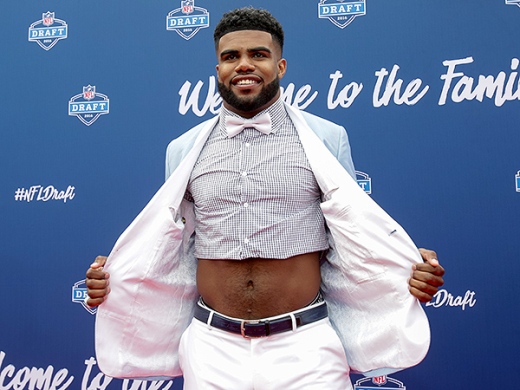


 Even the king fanatic, Mark Cuban, fell in love with Beaubois’ upside. So much so that when the Indiana Pacers offered their first round pick in 2010 for Beaubois, Cuban said “thanks but no thanks.” That pick wound up being Paul George, who is now a perennial all-star. Meanwhile, Roddy hasn’t played in the NBA since 2013.
Even the king fanatic, Mark Cuban, fell in love with Beaubois’ upside. So much so that when the Indiana Pacers offered their first round pick in 2010 for Beaubois, Cuban said “thanks but no thanks.” That pick wound up being Paul George, who is now a perennial all-star. Meanwhile, Roddy hasn’t played in the NBA since 2013.

